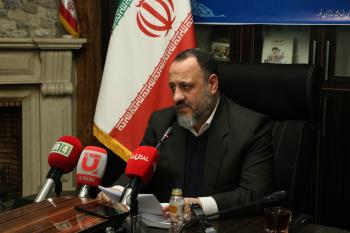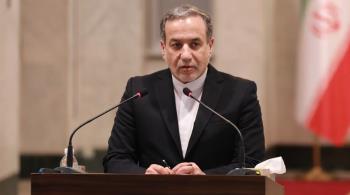Alwaght- In past few years, Saudi Arabia has applied an expansionist approach in its foreign policy. When the 32-year-old Mohammad bin Salman was appointed crown prince of the oil-rich kingdom, the country’s foreign policy picked up the pace to break with the long-held conservatism and instead sought boost of influence and intervention in various parts of Asia.
Although Saudi rulers are mainly focused on the West Asia region and its fast-moving developments, Central Asia region has been also among their priorities. For example, The Saudi crown prince, who is also the country’s defense minister, in June visited Azerbaijan in an effort to broaden ties with Dushanbe.
Experts believe there are three reasons behind Saudis' struggle to get a toehold in Central Asia.
Taking on Iran
The first goal of the Arab monarchy behind striving for a foothold in the Central Asia is closely linked to the Riyadh competition with Iran in a variety of regional cases and crises. The fact is that Saudi Arabia has lost the edge to the Islamic Republic when it comes to the rivalry between the two after the 2011 events that swept through the region, with the balance of power considerably shifting in favor of the Iranian-led Axis of Resistance that covers a wide regional range from Tehran to Beirut, something ruffling the feathers of the Saudis.
Stimulating enough, the loss has pushed Saudi Arabia to fight for influence in that region in a bid to, on the one hand, make up for its setbacks in the West Asia and, on the other hand, provoke the Central Asia and Caucasus states especially Azerbaijan against Iran. In general, the kingdom after defeats in Syria, Iraq, Lebanon, and Yemen is trying to forge allies in Central Asia and Caucasus and thus turn the tide in its favor. A good evidence for this Saudi diplomacy is the reaction of Saudi Arabia to the tensions erupted in early August between Iran and Tajikistan, a Caucasian state. Saudi Ambassador to the Republic of Tajikistan Abdulaziz bin Mohammad al-Badi, commenting on the frayed relations between Dushanbe and Tehran, said that this was a great victory for Saudi Arabia and its leadership.
Spreading Wahhabism in Central Asia
Saudi Arabia has more reasons and goals to seek presence in the Central Asia region, including a desire to propagate Wahhabism, which stands as a basis for the takfiri-terrorist ideology in the region. In the Saudi viewpoint, propagation of takfiri fundamentalist ideology could build a hurdle ahead of the Iranian influence in West Asia. In fact, the idea behind creating and nurturing the terrorist groups by Saudi Arabia and its Western allies in Caucasus through South Asia is to tighten the noose on Iran and force the way of influence in this country’s sphere of civilization.
The Saudis do their ideological distribution out of awareness of the economic hardships and poverty in the Central Asia. They spend huge sums of money on Wahhabi ideology spread which is done through Riyadh-funded religious centers and madrassas in the region. The evidence suggests that the Wahhabi radical groups active in Central and Northern Caucasus are specifically bankrolled by Saudi Arabia. This is beside other documents that note that the Saudi kingdom has been recruiting fighters from the region to the Iraqi and Syrian fronts after training them in secret camps.
Saudi Arabia has more than one reason to promote Wahhabi ideology in the Central Asia, the traditional area of Russian influence and its backyard. It wants to put strains on Russia in protest to Moscow's West Asia policy like the fashion of dealing with the Syrian crisis, ties with Tehran, and also its approach to the Qatari row with the Saudi-led Arab neighbors. The Russian approach apparently runs counter to the Saudi policy and interests.
The Russian leaders have persistently been worried about an increase in activities of the Islamist separatists of Chechnya, an autonomous Russian region in North Caucasus. A top leader of the Wahhabism in the Russian Caucasus was Shaikh Said Afandi Al-Chirkawi. Security investigations say he had hands in the incitement against Russia of an armed Salafi group known as "Sons of Jungle" that is active in the Dagestan forests and officially announced war against the regional government which it calls Kremlin's “protégé.”
Investment
Investment for economic profit is the last thing motivating Saudi Arabia to seek sway in the Central Asia and Caucasus. The sagging oil prices in the global market and regime's costly wars against Yemen have left the oil-dependent Saudi Arabian economy suffering. Now the Saudi leaders are seeking an exit from the economic predicament. They turn head to the Central Asian states in an attempt to tackle their economic hardship, though the top end of investment and building friendly relations with the regional states remains Riyadh's desire for influence.
So, the main Saudi motivation to go to the Central Asia is vying with Iran to check Tehran's regional influence. The Saudis resort to a wide range of instruments to this end, including propagation of Wahhabism and other costly measures. After all, as a losing side of the West Asian developments, the Saudis are optimistic that gaining ground in the Central Asia can alleviate the pain of their defeats.



























